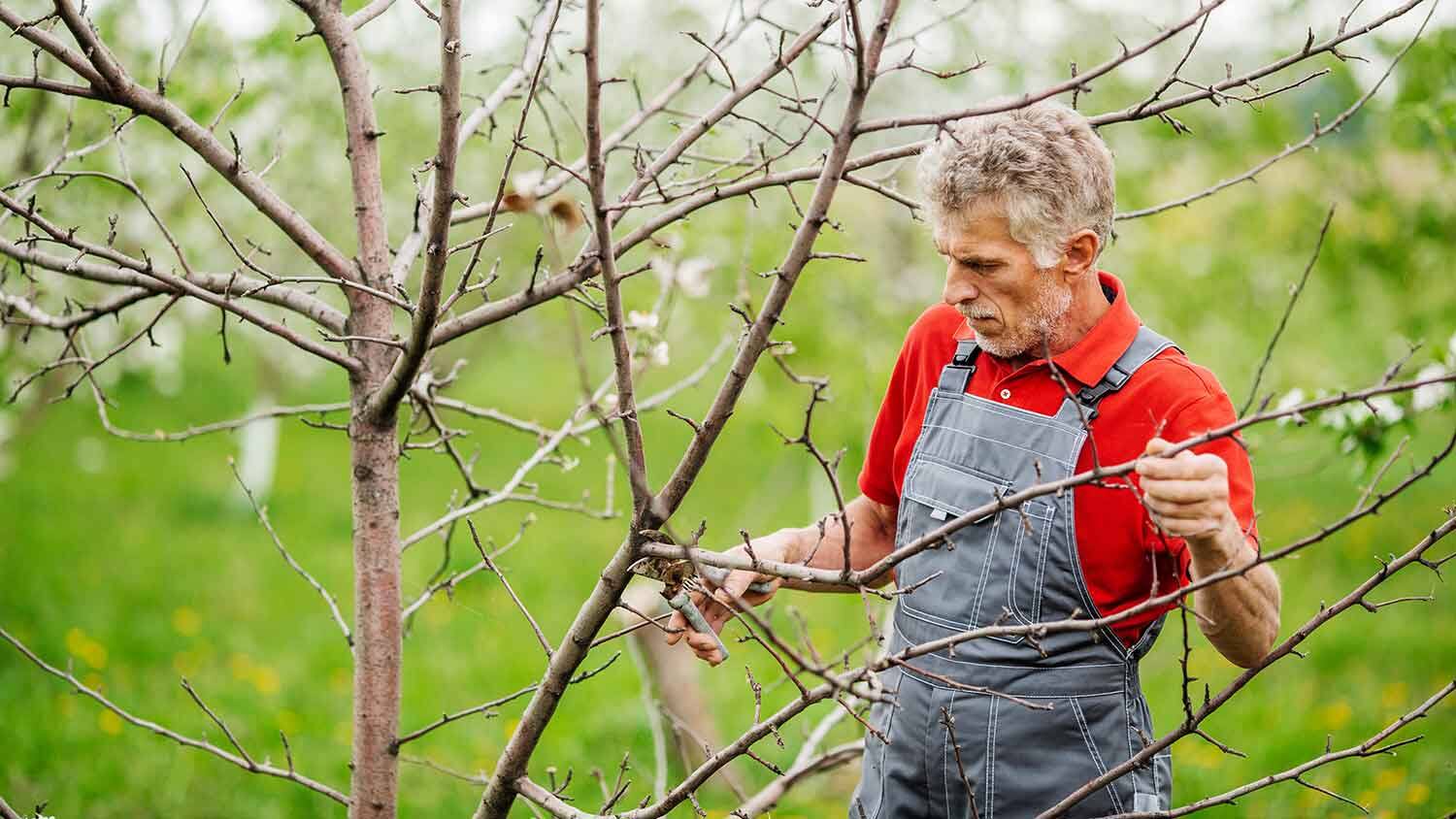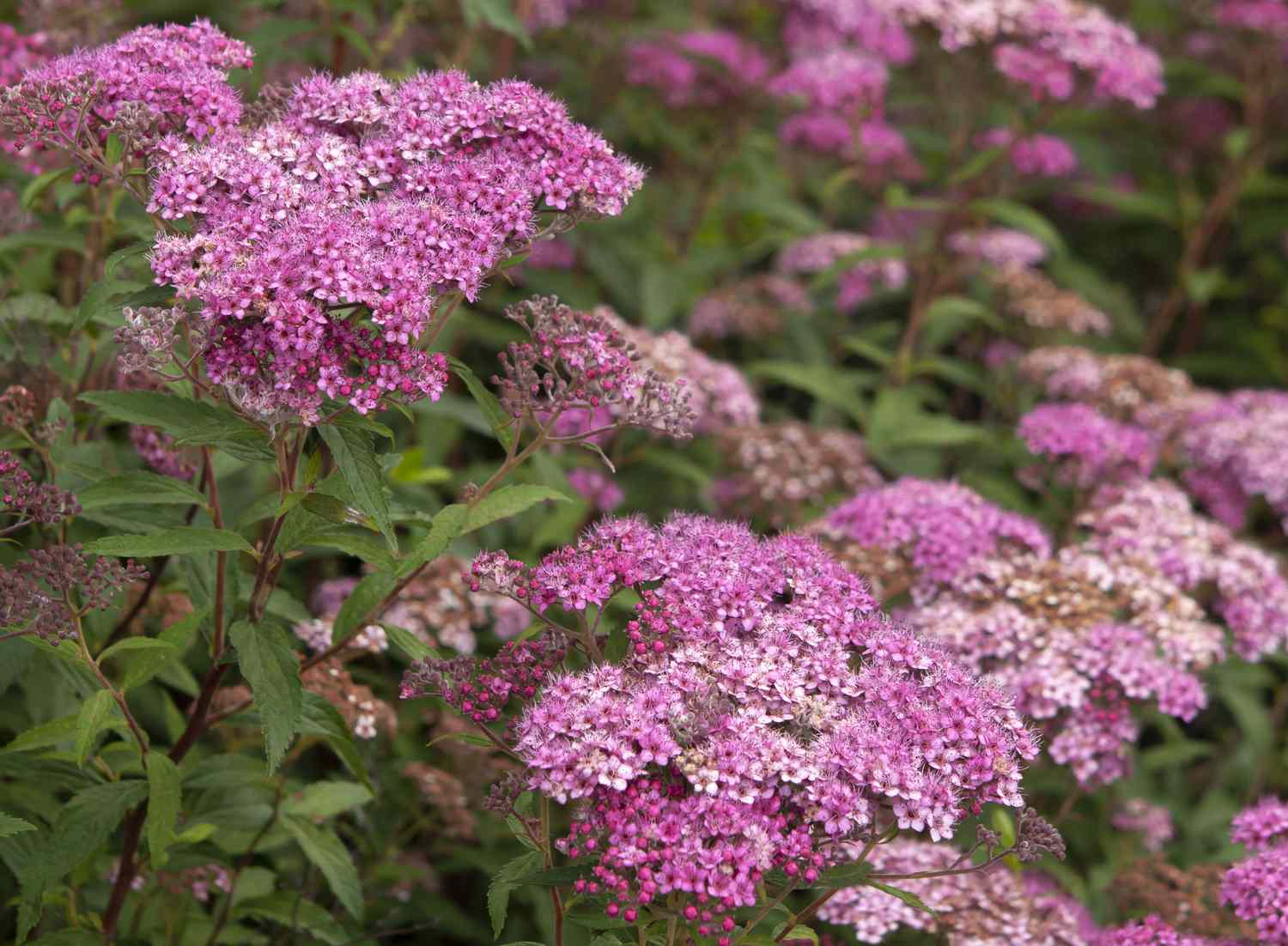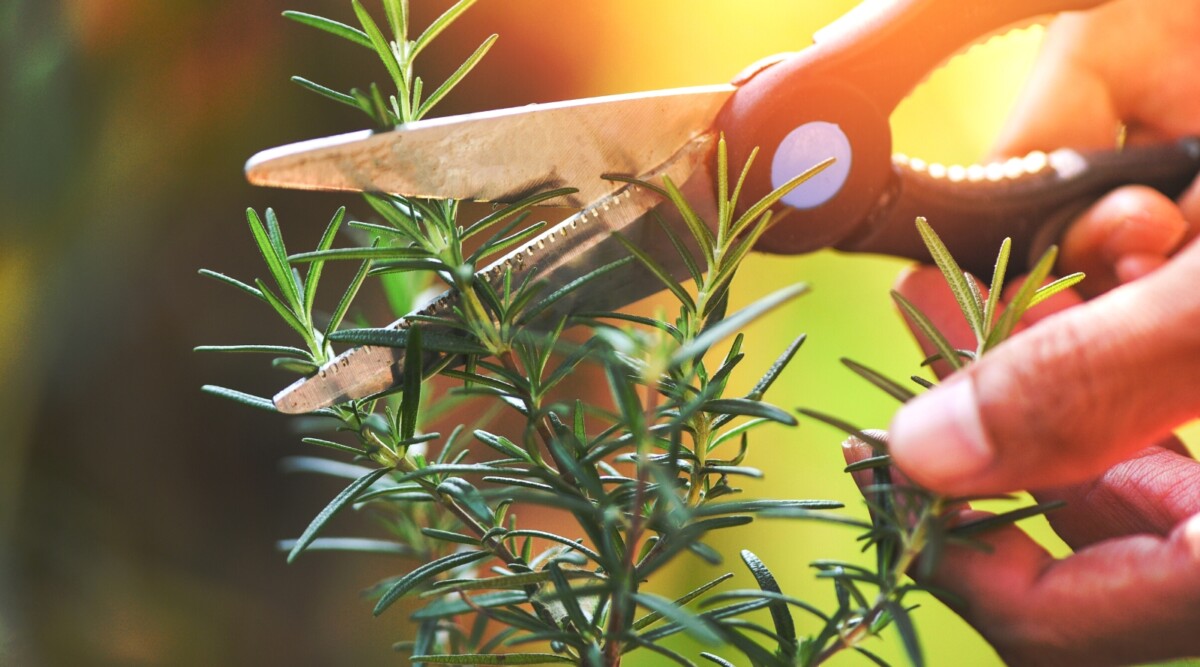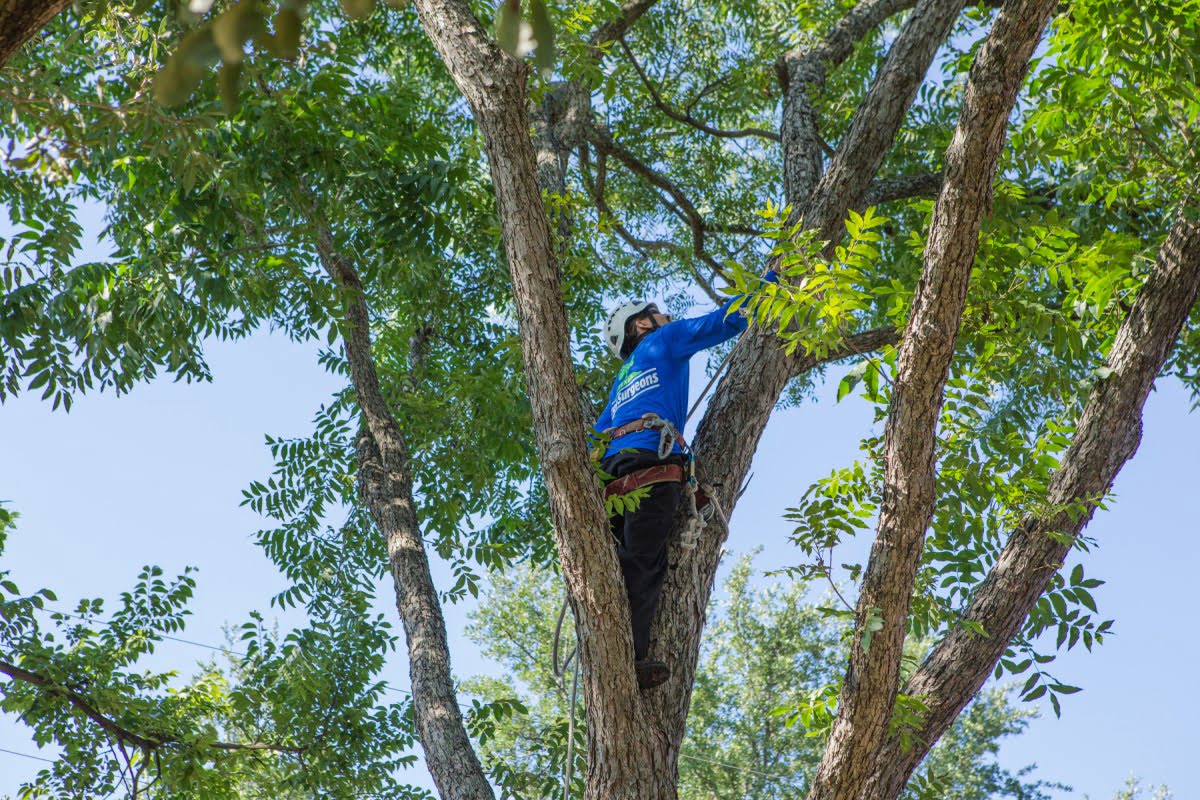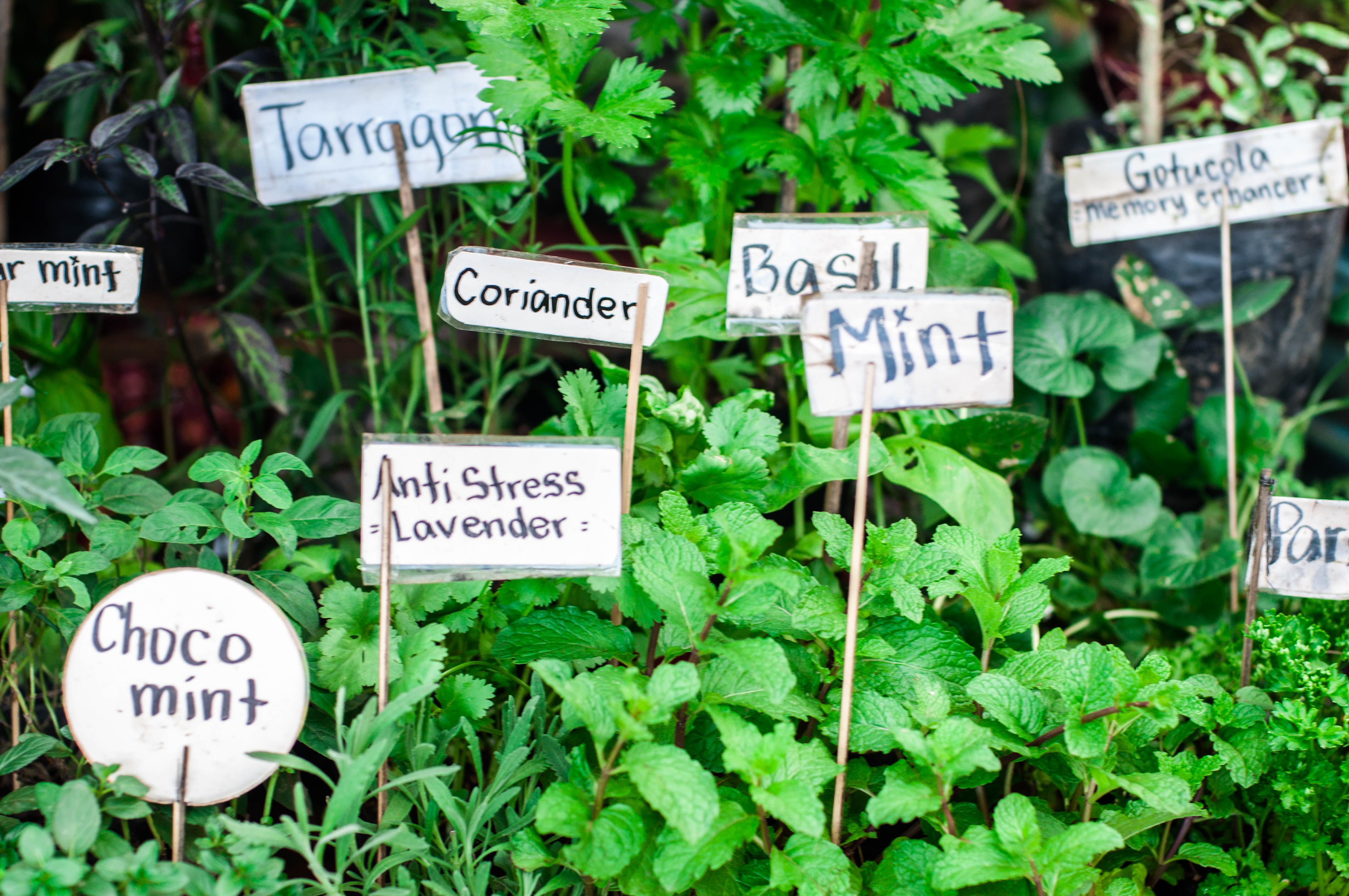Home>Gardening Techniques>Plant Care>When To Trim Herbs


Plant Care
When To Trim Herbs
Modified: January 22, 2024
Learn the best time for trimming herbs and how it improves plant care. Discover expert tips and techniques for maintaining healthy and productive herb gardens.
(Many of the links in this article redirect to a specific reviewed product. Your purchase of these products through affiliate links helps to generate commission for Chicagolandgardening.com, at no extra cost. Learn more)
Table of Contents
Introduction
Welcome to the wonderful world of plant care! Whether you’re an experienced gardener or a beginner, knowing how to properly care for your plants is essential for their health and longevity. One important aspect of plant care is knowing when and how to trim your herbs. Trimming your herbs not only helps to maintain their shape and size, but it also promotes healthier and more robust growth.
Trimming herbs involves selectively removing certain parts of the plant, such as stems, leaves, or flowers. The timing and technique of trimming can vary depending on the type of herb you’re dealing with, as each herb has its own unique growth pattern and needs. By understanding the factors to consider when trimming herbs, as well as the benefits and best practices, you can ensure that your herb garden thrives and provides you with an abundant supply of fresh and flavorful herbs.
There are several key factors to take into account before diving into the world of herb trimming. Firstly, you’ll want to assess the overall health of your herbs. Healthy, vibrant plants are better able to withstand the stress of trimming and are more likely to respond positively to the process. Additionally, you should consider the specific growth habit of each herb, as some herbs may require more frequent or less aggressive trimming than others.
Another aspect to consider is the specific purpose behind trimming your herbs. Are you trimming them for culinary use or for aesthetic purposes? Different herbs have different flavor profiles, and knowing when and how to trim them can help enhance their taste and aroma. On the other hand, if you’re trimming your herbs to maintain a certain shape or to encourage dense growth, you’ll need to follow different techniques and timing.
In the following sections, we’ll explore the signs that indicate it’s time to trim your herbs, the best time of the year to trim them, and the proper techniques for trimming different types of herbs. We’ll also discuss some common mistakes to avoid when trimming herbs, as well as the many benefits of regularly trimming your herbs. So, grab your gardening tools and let’s embark on a journey to learn all about the art of trimming herbs!
Factors to Consider Before Trimming Herbs
Before you grab your shears and start trimming away, there are a few important factors to consider. Taking these factors into account will help ensure that you trim your herbs at the right time and in the right way, promoting healthier growth and maximizing their flavor. Let’s take a closer look at these factors.
1. Overall Health of the Herbs: It’s crucial to assess the overall health of your herbs before trimming them. If your herbs are struggling or showing signs of stress, such as yellowing leaves or wilting, it’s best to hold off on trimming until they have recovered. Trimming stressed plants can further weaken them and impede their ability to bounce back.
2. Growth Habit of the Herbs: Each herb has its own unique growth habit, and understanding this is vital for proper trimming. Some herbs, like basil or mint, tend to grow bushier and benefit from frequent trimming to encourage denser growth. Others, like rosemary or thyme, have a slower growth pattern and may require less frequent or less aggressive trimming.
3. Purpose of Trimming: Consider your purpose behind trimming your herbs. Are you trimming them for culinary use or for aesthetic reasons? Knowing your goal will help determine the timing and technique of trimming. For culinary herbs, you may want to trim them when they have reached a certain size or to encourage the production of fresh leaves. For aesthetically pleasing herbs, you may focus on shaping or compacting the plant to maintain its visual appeal.
4. Weather Conditions: The weather can play a role in determining when to trim your herbs. Extreme weather conditions, such as prolonged heatwaves or frosts, can stress plants, making them more susceptible to damage from trimming. It’s best to avoid trimming during these periods and wait for more favorable weather conditions.
5. Plant Growth Cycle: Understanding the growth cycle of your herbs is essential for effective trimming. Some herbs go through a dormancy period during certain times of the year, while others may have specific seasons of vigorous growth. Trimming at the appropriate time in their growth cycle can help stimulate new growth and maintain the health of the plant.
By taking these factors into consideration, you’ll be better equipped to determine the optimal time and approach for trimming your herbs. Remember, each herb is unique, so it’s important to be observant and adjust your trimming routine accordingly. In the next section, we will explore the signs that indicate it’s time to trim your herbs, helping you to further refine your trimming schedule.
Signs that Indicate It’s Time to Trim Your Herbs
Knowing when to trim your herbs is key to maintaining their health, shape, and productivity. While the timing can vary depending on the specific herb, there are some common signs that indicate it’s time to pick up your pruning shears. These signs serve as cues that your herbs could benefit from a trim, helping them to thrive and continue providing you with an abundant harvest. Let’s explore these signs in more detail.
1. Overgrown Appearance: One of the most obvious signs that your herbs need trimming is when they start to look overgrown and straggly. If the stems are becoming long and leggy, or if the foliage is spilling over the sides of the pot or garden bed, it’s a clear indication that a trim is needed. Trimming will help tidy up the plant and promote a more compact and aesthetically pleasing appearance.
2. Flowering or Bolting: Many herbs produce flowers as part of their natural growth cycle. While these flowers can be beautiful, allowing the plant to fully flower can affect the taste and quality of the leaves. When you notice your herbs starting to produce flowers or bolting, it’s a sign that you should trim them. Removing the flower stalks will redirect the plant’s energy back into leaf production, ensuring a fresher and more flavorful harvest.
3. Yellowing or Dying Leaves: If you observe yellowing or dying leaves on your herbs, it’s a signal that some pruning is needed. Yellowing leaves can be a sign of nutrient deficiencies or disease, and removing them will help redirect nutrients to healthier parts of the plant. Trimming off dying leaves also prevents the spread of diseases and ensures that the plant can focus on producing new, healthy foliage.
4. Lush Growth at the Top: When you see that your herbs are growing vigorously at the top but have sparse growth in the lower sections, it’s an indication that trimming is necessary. Trimming the top growth encourages lateral branching, which helps to create a bushier and more evenly distributed plant. This not only improves the herb’s appearance but also enhances its overall health and productivity.
5. Encroachment on Other Plants: Herbs that are planted alongside other plants can sometimes encroach upon their neighbors. If you notice that your herbs are shading or crowding out other plants, it’s a sign that they should be trimmed back. Doing so will allow for better air circulation and sunlight exposure for both your herbs and the surrounding plants, promoting healthier overall growth.
Keep in mind that these signs are general indications and may vary slightly depending on the specific herb you’re growing. It’s important to familiarize yourself with the growth patterns and needs of each herb in your garden to determine the best time and extent of trimming. In the next section, we will discuss the best time of the year to trim your herbs, taking into account their growth habits and seasons.
Best Time of the Year to Trim Herbs
Timing is crucial when it comes to trimming your herbs, as it can significantly impact their growth and overall health. The best time to trim your herbs can vary depending on the specific herb and its growth habits. Understanding the seasonal cycles and growth patterns of your herbs will help you determine the optimal time to pick up your pruning shears. Let’s explore the best time of the year to trim herbs, considering these factors.
1. Spring: Spring is a great time to kickstart your herb garden and give your herbs their first trim of the year. As the temperatures start to warm up, herbs break their winter dormancy and begin to show new growth. Trimming in early spring allows you to remove any dead or damaged foliage from the previous season and encourages fresh growth. Be sure to wait until any threat of frost has passed before trimming, as frost can damage tender new growth.
2. Summer: In summer, when herbs are in their peak growing season, it’s best to trim them lightly and frequently. Regular trimming encourages bushier growth, prevents legginess, and helps maintain the plant’s shape and appearance. Pinch off the tips of the stems to encourage the development of side shoots and a more compact growth habit. However, be mindful not to over-prune, as excessive trimming can weaken the plant.
3. Fall: As summer transitions into fall, it’s time to prepare your herbs for the dormant period ahead. Major pruning should be avoided during this time, as it can stimulate new growth that may not have enough time to establish before colder temperatures set in. Instead, focus on light maintenance trimming, removing any dead or diseased leaves, and shaping the herbs to ensure they are tidy and prepared for winter.
4. Winter: Winter is generally a period of dormancy for many herbs. However, some herbs like rosemary and thyme may continue to grow slowly during this time. It’s important to refrain from heavy pruning during winter, as it can disrupt their natural growth cycle. Instead, trim sparingly, only removing any dead or damaged branches. Pruning during winter should focus on promoting airflow and maintaining the plant’s overall structure.
Keep in mind that while these are general guidelines, some herbs may have specific timing requirements. For instance, annual herbs like basil may need more frequent trimming throughout the growing season, while perennial herbs like lavender may benefit from lighter trimming after their flowering period. Always observe the individual needs of your herbs and adjust your trimming schedule accordingly.
Now that you know the best time of the year to trim your herbs, it’s time to learn how to properly trim different types of herbs. In the next section, we will delve into the specific techniques and considerations for trimming various herbs, ensuring that you can give your plants the care they need.
How to Properly Trim Different Types of Herbs
Trimming herbs is not a one-size-fits-all approach. Different herbs have different growth habits and trimming requirements. Knowing the specific techniques for each herb will help you properly trim and maintain their health and productivity. Let’s explore how to properly trim different types of herbs.
1. Basil: Basil is a herb that benefits from regular and frequent trimming. To trim basil, pinch off the tips of the stems just above leaf nodes. This encourages branching and prevents the plant from becoming tall and leggy. Harvesting the leaves regularly also stimulates fresh growth. Be sure to remove any flower buds promptly to keep the plant productive.
2. Mint: Mint is a fast-growing herb that can become invasive if not properly managed. To trim mint, pinch off the top inch or two of the stems regularly. This encourages new growth and helps maintain a bushy and compact plant. Additionally, trim any long or straggly stems to promote a more uniform appearance.
3. Rosemary: Rosemary is a woody perennial herb that requires a slightly different approach to trimming. In early spring, after the danger of frost has passed, lightly prune the tips of the stems to encourage bushier growth. Avoid cutting into the woody stems, as they may not produce new growth. As the plant matures, you may trim off any dead or damaged branches to keep it healthy and tidy.
4. Thyme: Thyme is a low-growing herb that benefits from regular trimming to keep it compact and prevent it from becoming woody. Trim off the top few inches of the stems to encourage fresh growth and prevent the plant from becoming leggy. You can trim thyme throughout the growing season, but avoid heavy pruning in fall, as thyme tends to be less tolerant of severe pruning.
5. Parsley: Parsley is a biennial herb that requires careful trimming to ensure continuous growth. Harvest the outer stems and leaves, leaving the central rosette intact to allow for regrowth. Regularly harvesting the outer leaves also prevents the plant from bolting and focuses its energy on producing new foliage.
6. Oregano: Oregano is a perennial herb that benefits from regular trimming to maintain a compact shape and promote fresh growth. In spring, trim off the top few inches of the stems to encourage branching. Throughout the growing season, trim oregano whenever it starts to look overgrown or to maintain its desired shape.
Remember to use sharp, clean pruning shears or scissors when trimming your herbs. This prevents the spread of diseases and ensures clean cuts that heal quickly. As you trim your herbs, take the opportunity to inspect the plants for any signs of pests or diseases and address them promptly.
By following these techniques for trimming different types of herbs, you can ensure that your herbs remain healthy, productive, and aesthetically pleasing. However, it’s important to note that these are general guidelines, and there may be variations within different varieties of each herb. Always observe the specific needs of your herbs and adjust your trimming routine accordingly.
In the next section, we will explore some common mistakes to avoid when trimming herbs, helping you maintain the health and vitality of your herb garden.
Common Mistakes to Avoid When Trimming Herbs
Trimming herbs is an important aspect of plant care, but it’s essential to do it correctly to avoid causing harm to your plants. While it may seem like a simple task, there are some common mistakes that can compromise the health and vitality of your herbs. By being aware of these mistakes and taking the necessary precautions, you can ensure that your herbs thrive and continue to provide you with bountiful harvests. Let’s explore some common mistakes to avoid when trimming herbs.
1. Over-Pruning: One of the most common mistakes is over-pruning, which involves removing too much foliage from the herb. Over-pruning can stress the plant and weaken its ability to rebound. It’s important to trim selectively and in moderation. Remember, it’s better to trim in stages than to go overboard and risk damaging the plant.
2. Poor Pruning Technique: Using improper pruning technique can lead to jagged cuts or damage to the main stem. Always use sharp, clean pruning shears or scissors to make clean cuts just above leaf nodes or junctions. Avoid tearing or ripping the plant material, as this can create entry points for diseases or pests.
3. Pruning at the Wrong Time: Timing is crucial when it comes to trimming herbs. Pruning at the wrong time, such as during the plant’s dormant period or during extreme weather conditions, can hinder its growth and recovery. Be sure to trim when the herbs are actively growing and avoid pruning during periods of stress, such as very hot or cold temperatures.
4. Neglecting Sanitation: Neglecting proper sanitation can lead to the spread of diseases and pests among your herbs. Always clean your pruning tools with a disinfectant solution before and after each use. This helps prevent the transmission of pathogens from plant to plant and promotes the overall health of your herb garden.
5. Failing to Pinch or Deadhead: Pinching or deadheading is an important part of herb trimming. Pinching involves removing the tips of the stems to encourage lateral branching and a bushier growth habit. Deadheading refers to removing spent flowers to redirect the plant’s energy back into foliage production. Neglecting these practices can result in leggy, unproductive plants.
6. Ignoring Signs of Stress: It’s important to pay attention to your herbs and observe any signs of stress or disease. If you notice wilting, yellowing leaves, or other signs of distress, it’s best to hold off on trimming until the plant has recovered. Trimming stressed plants can further weaken them and impede their ability to bounce back.
Remember, each herb is unique, and it’s essential to understand its specific needs and growth habits. Taking the time to research and familiarize yourself with the proper trimming techniques for each herb will go a long way in keeping them healthy and productive.
By avoiding these common mistakes and practicing proper trimming techniques, you’ll ensure that your herb garden thrives and continues to provide you with a fresh and flavorful harvest. In the final section, we will discuss the numerous benefits of regularly trimming your herbs.
Benefits of Regularly Trimming Herbs
Regularly trimming your herbs is not just about maintaining their appearance; it also provides numerous benefits for their health and productivity. By incorporating a consistent trimming routine into your herb care regimen, you can enhance the overall growth, flavor, and longevity of your herbs. Let’s explore some of the key benefits of regularly trimming your herbs.
1. Stimulates Growth: Trimming your herbs stimulates growth by encouraging branching and the development of new shoots. When you trim the tips of the stems, it signals the plant to redirect its energy into producing new foliage. This results in a bushier and more compact plant, allowing for increased leaf production and a more abundant harvest.
2. Enhances Flavor: Trimming herbs promotes the production of fresh growth, which is often more flavorful and aromatic than older leaves. Regularly harvesting and trimming your herbs ensures that you have a steady supply of tender, flavorful leaves to incorporate into your culinary creations. The concentrated essential oils in the fresh growth can elevate the taste of your dishes and enhance their overall quality.
3. Prevents Bolting: Many herbs tend to bolt, or produce flowers, as part of their natural life cycle. This can negatively impact the flavor and quality of the leaves. Regularly trimming your herbs, especially the ones prone to bolting, helps delay or prevent this process. By regularly removing flower buds or cutting back flowering stems, you encourage the herb to focus on leaf production, ensuring a longer harvest period.
4. Controls Size and Shape: Trimming allows you to control the size and shape of your herbs, making them more manageable and visually appealing. If left untrimmed, some herbs can become leggy or sprawl out, taking up unnecessary space. Regular trimming helps maintain a neat and compact growth habit, making it easier to fit your herbs into tight spaces or containers.
5. Prevents Disease and Pests: Trimming your herbs helps improve airflow and sunlight penetration, reducing the risk of diseases caused by overly dense foliage. It also allows you to inspect your plants closely, identifying and removing any signs of pests or diseases before they spread. Removing damaged or diseased foliage through trimming helps prevent the spread of pathogens and ensures the overall health of your herb garden.
6. Encourages Longevity: Regularly trimming your herbs extends their lifespan by promoting healthier growth and preventing the plants from becoming woody or exhausted. By trimming off spent or aging foliage, you reduce the strain on the plant and encourage the production of fresh, young leaves. This helps prolong the productive lifespan of your herbs, allowing you to enjoy their flavors and benefits for a longer period.
By incorporating regular trimming into your herb care routine, you can reap these benefits and enjoy a thriving herb garden. Remember, trimming techniques may vary for different herbs, so it’s important to familiarize yourself with the specific needs of each herb. With proper care and attention, your herbs will flourish and provide you with a fresh supply of delicious flavors for all your culinary endeavors.
Now that you understand the benefits of regularly trimming your herbs, you’re well-equipped to maintain their health and productivity. In this article, we’ve explored the factors to consider before trimming herbs, signs that indicate it’s time to trim, the best time of the year to trim, proper trimming techniques for different herbs, common mistakes to avoid, and the benefits of regular trimming. Armed with this knowledge, you can confidently care for your herbs and create a thriving herb garden.
Conclusion
Trimming your herbs is an essential part of plant care that provides numerous benefits. By understanding the factors to consider before trimming, recognizing the signs that indicate it’s time to trim, and knowing the best time of year to trim, you can ensure the health and productivity of your herb garden. Properly trimming different types of herbs and avoiding common mistakes will help your herbs thrive and continue to provide you with a bountiful harvest.
Regularly trimming your herbs stimulates growth, enhances flavor, prevents bolting, controls size and shape, and promotes longevity. It also helps maintain the overall health of your herbs by improving airflow, preventing the spread of diseases and pests, and facilitating regular inspection of the plants.
As you care for your herbs, remember to personalize your approach based on the specific needs and growth habits of each herb. Take the time to research and understand the trimming requirements of your herbs to ensure they receive the proper care they deserve.
Now that you have the knowledge and tools to trim your herbs effectively, it’s time to put your skills to practice. Enjoy the process of trimming, observe the growth of your herbs, and relish in the flavors and aromas they provide. With proper trimming, your herb garden will thrive, and you’ll have a readily available supply of fresh and flavorful herbs to elevate your culinary creations.
So, don’t hesitate to pick up your pruning shears and embark on the journey of trimming your herbs. Whether you’re a seasoned gardener or a novice plant enthusiast, taking the time to trim your herbs will bring you closer to nature and reward you with a flourishing and vibrant herb garden.


